
Kumano Hongu Taisha
A sacred head shrine of the Kumano Sanzan, offering a profound spiritual journey on ancient pilgrimage routes.

Highlights
Must-see attractions

Social
From TikTok & Reddit
Best Time
Fewer crowds, serene atmosphere

Kumano Hongu Taisha
Best Time
Fewer crowds, serene atmosphere

Highlights
Must-see attractions
A sacred head shrine of the Kumano Sanzan, offering a profound spiritual journey on ancient pilgrimage routes.
"It is no wonder that since ancient times people have come here seeking purification and renewal."
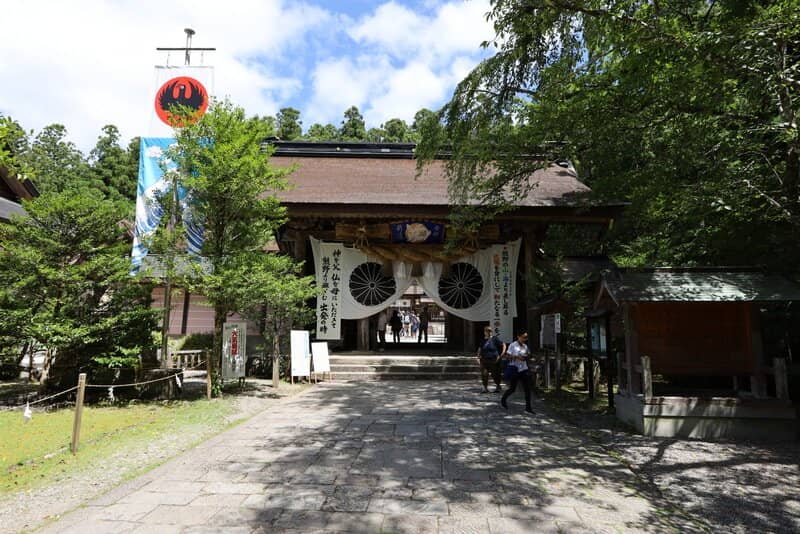
🚶♀️ Hike the Kumano Kodo
Experience the spiritual journey by walking sections of the ancient pilgrimage trail. The Hosshinmon-oji to Hongu Taisha is a popular choice .
⛩️ Visit the Great Torii
Don't miss the Oyunohara, Japan's largest torii gate, a truly impressive sight near the former shrine site .
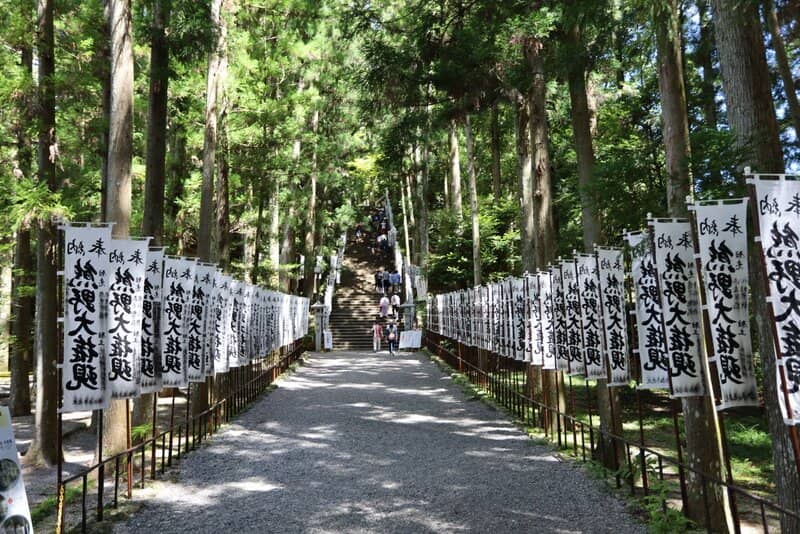
Highlights
Discover the most iconic attractions and experiences

Oyunohara Great Torii
Former site of Kumano Hongu Taisha
The largest torii gate in Japan, a monumental gateway to the spiritual realm. A truly awe-inspiring sight .
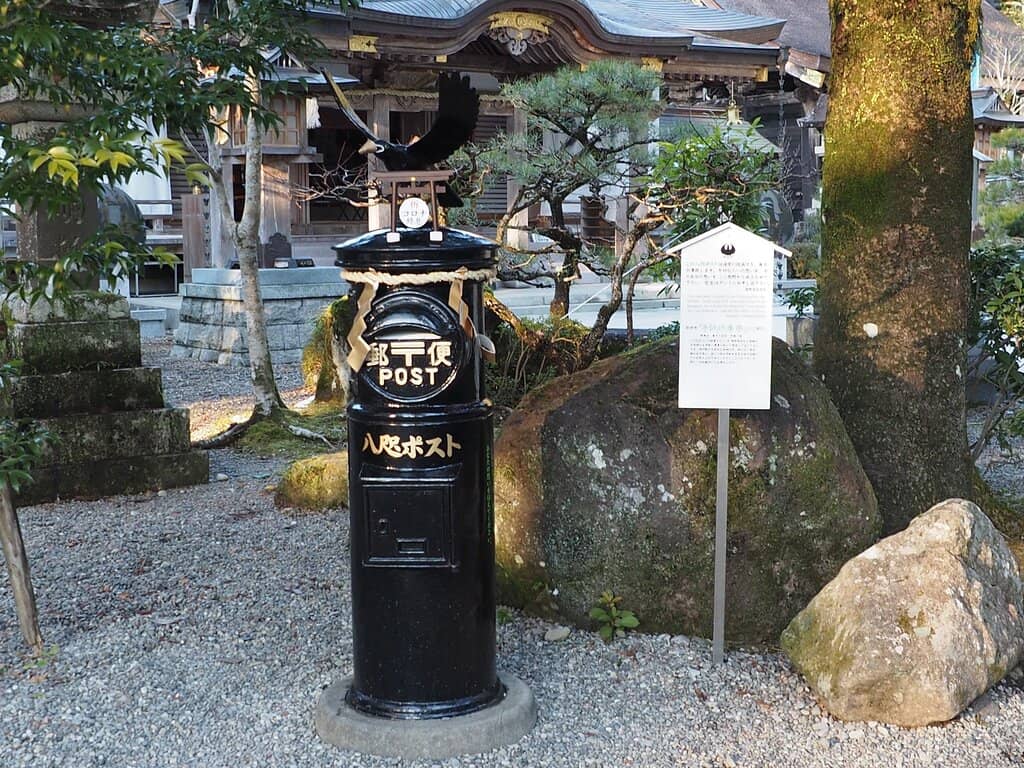
Kumano Hongu Taisha Shrine
Main shrine complex
The head shrine of the Kumano Sanzan, offering a profound spiritual experience amidst nature's tranquility .
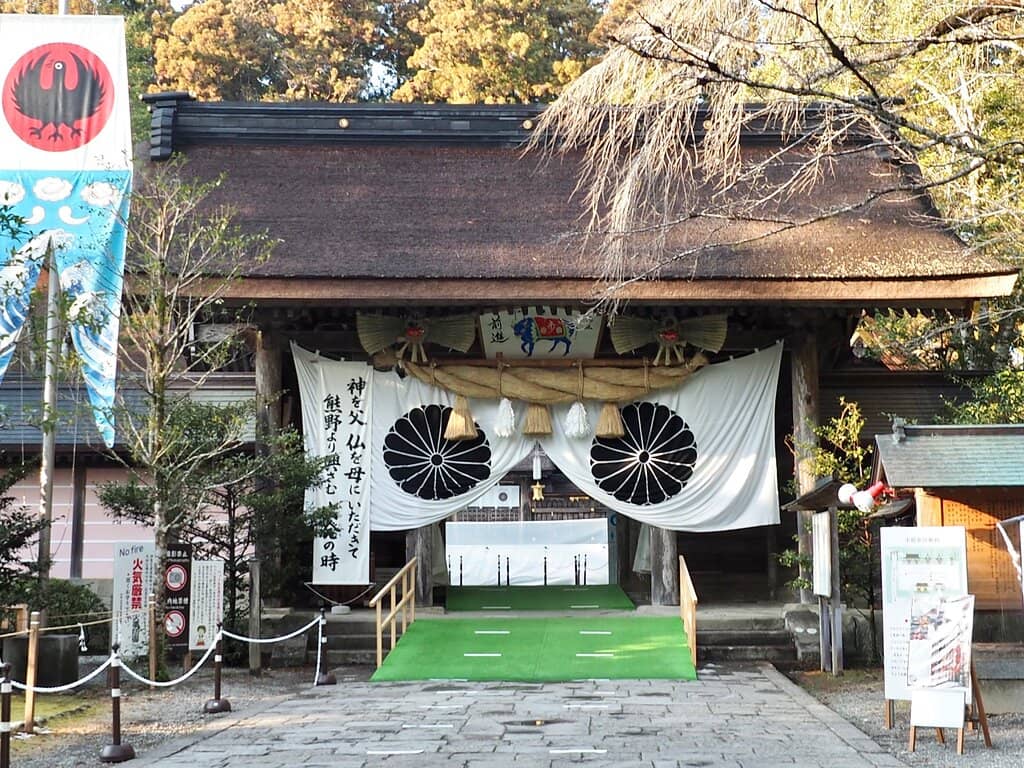
Kumano Kodo Trail
Various access points
Walk ancient pilgrimage paths, connecting with nature and history on this UNESCO World Heritage route .
Plans like a pro.
Thinks like you
Planning Your Visit
Embrace the Pilgrimage Spirit
Respect Sacred Spaces
Best Times
Insider Tips
from TikTok, Instagram & Reddit
🚶♀️ Hike the Kumano Kodo
Experience the spiritual journey by walking sections of the ancient pilgrimage trail. The Hosshinmon-oji to Hongu Taisha is a popular choice.
⛩️ Visit the Great Torii
Don't miss the Oyunohara, Japan's largest torii gate, a truly impressive sight near the former shrine site.
stamp
Collect your goshuin stamp at the shrine office to commemorate your pilgrimage. Consider the dual pilgrim program if you've completed the Camino.
👟 Wear comfortable shoes
Whether hiking or exploring the shrine grounds, comfortable footwear is essential for navigating the terrain.
Tips
from all over the internet
🚶♀️ Hike the Kumano Kodo
Experience the spiritual journey by walking sections of the ancient pilgrimage trail. The Hosshinmon-oji to Hongu Taisha is a popular choice.
⛩️ Visit the Great Torii
Don't miss the Oyunohara, Japan's largest torii gate, a truly impressive sight near the former shrine site.
stamp
Collect your goshuin stamp at the shrine office to commemorate your pilgrimage. Consider the dual pilgrim program if you've completed the Camino.
👟 Wear comfortable shoes
Whether hiking or exploring the shrine grounds, comfortable footwear is essential for navigating the terrain.
💧 Stay hydrated
Especially if hiking, carry plenty of water. Some vending machines are available, but options can be limited.
What Travellers Say
Reviews Summary
Visitors find Kumano Hongu Taisha to be a deeply spiritual and refreshing destination, particularly for its connection to the ancient Kumano Kodo pilgrimage. The impressive Oyunohara Great Torii is a major highlight, though some note that the main shrine itself can feel more ordinary compared to other Kumano Sanzan sites. The serene natural surroundings and the opportunity for introspection are widely appreciated.
"As the main shrine in the Kumano Sanzan, the outlook of the shrine is more ordinary. You would need to walk up a long stairs before reaching the main shrine, which is quite spectacular when viewing from top. The place is quite spiritual with not much tourist and people but nature sounds and beauty. For me, it was quite refreshing to visit this place."
Eric Cheng
"Our pilgrimage along the Kumano Kodo trails began at Kumano Hongu Taisha, and it felt like both a natural and symbolic choice. In the tradition of the three Kumano shrines, Hongu represents the «present» — the moment that is lived here and now. For me, as a practicing Buddhist, this was a profound spiritual experience: the journey begins with the very moment where life, breath, and meaning exist.
The shrine stands deep within the mountains of the Kii region, surrounded by dense forests and rivers that have been considered sacred for centuries. The landscape is both harsh and generous: the rushing waters of the Kumano River, the mist shrouding the peaks, and the thick greenery all give it a sense of being apart from the everyday world. It is no wonder that since ancient times people have come here seeking purification and renewal.
The mythology of Kumano is closely tied to deities of death and rebirth. Susanoo-no-Mikoto, the storm god, is worshipped here, as is Izanami, the primordial mother associated with the realm of the dead. Yet through these figures also runs the idea of renewal — entry into the «Pure Land», where past and future converge. It is no coincidence that emperors of the Heian period came here to pray for rebirth and the salvation of the soul.
The history of the shrine has not been without hardship. In 1889, a flood destroyed the original sanctuary that stood on the banks of the Kumano River. Since then, the main shrine has been rebuilt on higher, safer ground, where it remains today. On the site of the former shrine now stand the great Otorii — the largest shrine gates in Japan. There is a rule that the inner sacred area should not be photographed, and it is important to respect that.
We traveled between the main shrines mostly by bus, walking only parts of the route, and this became a reflection for me on what truly defines a pilgrimage. Yes, in the past people walked these mountains for weeks, but what matters is not the means of travel, but what you carry within. This journey is made with the heart. Each visit to a shrine, each prayer, and each pause became part of an inner journey, regardless of how I physically arrived there.
The Kumano Kodo is recognized as a UNESCO World Heritage site, and to walk (or ride) along it is to join a thousand-year-old tradition. Beginning at Hongu means beginning with the present — with the living moment that opens the path to awareness. Pilgrims then usually continue to Hayatama Taisha (the past) and finish at Nachi Taisha (the future). This order carries a deep inner logic: to live the present, to recognize the past, and to face the future."
Irina Fukui
"The fifth stop on the Kumano Kodo Hosshinmon-oji hike is Kumano Hongu Taisha, the main shrine of the trail. It's a beautiful and peaceful place to get your stamp and take a break after the walk."
Ced Aquino
What People Like
What People Dislike
Frequently Asked Questions
🚇 🗺️ Getting There
The most common way to reach Kumano Hongu Taisha is by bus from Kii-Tanabe Station or Shingu Station. The journey can take several hours, especially if you're combining it with hiking sections of the Kumano Kodo. Some visitors also arrive by car, but parking can be limited. For those hiking, there are various trailheads that lead to the shrine.
Absolutely! The Kumano Kodo Nakahechi route includes a popular section from Hosshinmon-oji to Kumano Hongu Taisha, approximately 16km. Other routes are also available, offering different lengths and difficulty levels.
Buses are the primary mode of transport between Kumano Hongu Taisha, Kumano Hayatama Taisha, and Kumano Nachi Taisha. Some travelers opt for a combination of bus and walking parts of the Kumano Kodo trails.
Taxis are generally available in larger towns like Kii-Tanabe or Shingu, but they can be scarce in the more remote areas surrounding Kumano Hongu Taisha. It's advisable to rely on public buses or pre-arrange transportation if needed.
Yes, public buses are the main way to access Kumano Hongu Taisha. Look for buses heading towards Hongu Taisha-mae from Kii-Tanabe or Shingu. The journey offers scenic views of the Wakayama countryside.
🎫 🎫 Tickets & Entry
Kumano Hongu Taisha itself is free to enter. However, if you wish to purchase omamori (charms) or goshuin (stamps), there will be associated costs.
The shrine grounds are generally accessible throughout the day, allowing for early morning or late afternoon visits. Specific building hours for offices or shops may vary, so it's best to check locally if you have particular needs.
No, advance booking is not required for general entry to Kumano Hongu Taisha. It's a public shrine and pilgrimage site. However, if you plan to participate in specific guided tours or workshops, booking might be necessary.
Photography is generally allowed in most outdoor areas, but it's important to be respectful. The inner sacred area of the shrine may have restrictions, so always look for signage or ask if unsure.
The goshuin stamp for the Kumano Kodo pilgrimage can be obtained at the shrine office of Kumano Hongu Taisha. If you are a 'dual pilgrim' (having completed the Camino de Santiago), you can present your credentials for a special drumming ceremony.
🎫 ⛩️ Onsite Experience
Highlights include the main shrine buildings, the impressive Oyunohara Great Torii (the largest in Japan) at the former shrine site, and the surrounding natural beauty. The spiritual atmosphere is a key part of the experience.
A visit can range from 1-2 hours for a quick exploration to a full day if you're hiking a section of the Kumano Kodo or exploring the nearby Oyunohara area.
The main shrine complex involves climbing stairs, which may be challenging for some. The Oyunohara area is relatively flat. Access to certain parts of the Kumano Kodo trails can also be difficult.
It is the head shrine of the Kumano Sanzan and represents the 'present' in the pilgrimage's spiritual journey. It's a place of purification, renewal, and connection to ancient deities.
Yes, there are restrooms available. You can also find shops selling omamori (charms) and other souvenirs. Some visitors note that the bracelets can be overpriced.
🍽️ 🍽️ Food & Dining
There are a few dining options in the vicinity of Kumano Hongu Taisha, including small restaurants and cafes. Miya Sushi is a recommended spot nearby. For more extensive choices, you might need to travel to larger towns like Kii-Tanabe or Shingu.
The region is known for its fresh seafood, particularly tuna, as Nachi-Katsuura is a major fishing port. You can also find local specialties and traditional Japanese cuisine at restaurants in the area.
Finding strictly vegetarian or vegan options might be challenging in smaller, more traditional eateries. It's advisable to inquire about ingredients or look for restaurants that offer more diverse menus. Some accommodations might be able to cater to dietary needs if informed in advance.
Food options are limited along the trails themselves. It's best to pack snacks and water, or plan your meals around villages or towns you pass through, such as Yunomine Onsen or Hongu town.
Hongu town, near Kumano Hongu Taisha, offers several small restaurants and guesthouses that serve meals. These often feature local ingredients and traditional Japanese dishes.
📸 📸 Photography
The Oyunohara Great Torii is a must-photograph spot. The main shrine complex offers beautiful architectural shots, and the surrounding nature provides scenic backdrops. Be mindful of any photography restrictions within sacred areas.
Yes, the Oyunohara Great Torii is a popular and permitted photography subject. Its sheer scale makes for dramatic and memorable shots.
While general photography is often allowed, it's crucial to respect the sanctity of the site. Avoid intrusive photography, especially during ceremonies, and be aware of any signs prohibiting photos inside certain buildings or areas.
A versatile lens (like a 24-70mm equivalent) is useful for capturing both the grand scale of the torii and the details of the shrine. A wide-angle lens can be great for the torii, while a telephoto can be useful for isolating details. A tripod might be helpful for low-light conditions, but be mindful of crowds and restrictions.
Early morning offers soft light and fewer crowds, ideal for capturing the serene atmosphere. Late afternoon can also provide beautiful golden hour light. Midday sun can be harsh, but can also highlight the vibrant colors of the shrine.
For Different Travelers
Tailored advice for your travel style
👨👩👧 Families with Kids
Packing plenty of snacks and water is crucial, as dining options can be limited. Engaging children with the stories of the Kumano Kodo pilgrimage and the spiritual significance of the shrines can make the visit more educational and memorable. Look for opportunities to learn about Japanese folklore and nature.
🚶♀️ Solo Travelers & Backpackers
Utilizing public transport like buses is budget-friendly and efficient for navigating between the main sites. Accommodations range from guesthouses (minshuku) to more basic lodging, often found in towns along the pilgrimage routes. Collecting the goshuin stamp is a popular way for solo travelers to commemorate their journey.
🧘 Spiritual Seekers & Pilgrims
Consider dedicating time to walk a section of the Kumano Kodo, even if it's just a few kilometers, to fully immerse yourself in the pilgrimage experience. The act of walking, combined with the spiritual resonance of the shrines, can be a powerful catalyst for personal growth and renewal.
Deep Dives
In-depth insights and expert knowledge
The Kumano Kodo Pilgrimage
Travelers often describe the experience as deeply spiritual and refreshing, emphasizing that the journey is as much about the inner experience as the physical act of walking. The trails wind through dense forests, past ancient cedar trees, and offer glimpses of rural Japanese life. While some sections can be challenging with steep ascents and descents, many are manageable for beginners, especially with proper preparation.
It's important to note that the Kumano Kodo is not just a hike; it's a pilgrimage. The order of visiting the shrines often holds symbolic meaning: Hongu represents the 'present,' Hayatama the 'past,' and Nachi the 'future'. This spiritual progression adds another layer to the experience, making it a journey of self-discovery and renewal.
The Significance of Kumano Hongu Taisha
The original sanctuary of Kumano Hongu Taisha was located on the banks of the Kumano River, but it was destroyed by a flood in 1889. The current main shrine has been rebuilt on higher ground. The site of the former shrine is now marked by the Oyunohara Great Torii, which stands as the largest torii gate in Japan and a powerful symbol of the sacred area.
Visiting Kumano Hongu Taisha offers a unique blend of natural beauty and spiritual depth. The tranquil atmosphere, surrounded by lush forests and the sounds of nature, contributes to its reputation as a powerful spiritual site. Many visitors find the experience to be deeply moving and a chance for introspection and renewal.
Culinary Delights of the Kumano Region
Beyond seafood, the area offers traditional Japanese cuisine. Small restaurants and guesthouses in Hongu town and along the Kumano Kodo trails often serve local specialties made with seasonal ingredients. These can range from simple noodle dishes to more elaborate set meals. It's always a good idea to try local specialties when visiting, as they offer a taste of the region's culture.

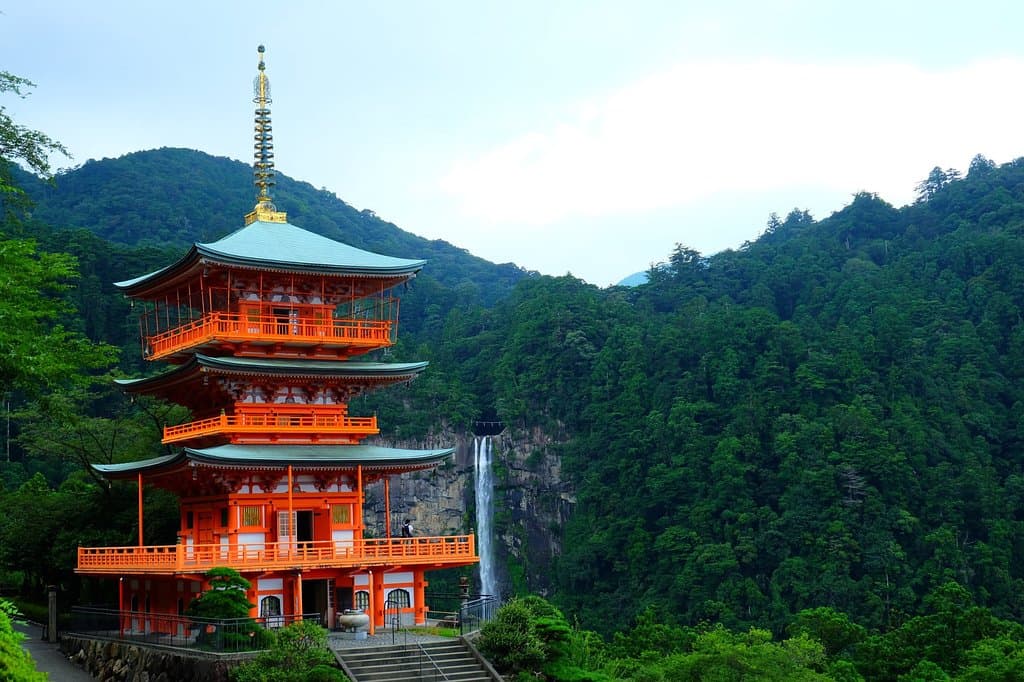
Social
from TikTok, Instagram & Reddit